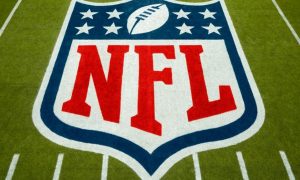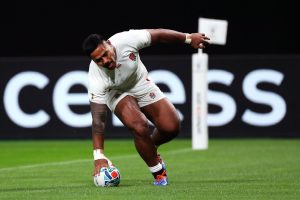
After more than 40 years of operation, DTVE is closing its doors and our website will no longer be updated daily. Thank you for all of your support.
The streaming sports rights scramble

The $50bn global sports rights market is a fragmented and fast-changing sector that defies easy elucidation. But at every stage of evolution in the media landscape one thing has stayed true: being associated with the best sports rights is a proven way to drive revenues and change consumer behaviour.
The fact that Fox in the US has almost sold out its NFL Super Bowl ad inventory at a record-breaking $7m for a 30-second slot is just one example of how live sport’s powers of persuasion continue to be in demand. Another is the English Premier League’s ability to generate around $3-4bn a year from its global TV rights. For the myriad of broadcasters and platforms that battle it out for a share of the EPL’s inventory, live sport remains a potent weapon when it comes to acquiring subscribers, generating ad revenue and building brand values.
Of course, one thing that has changed dramatically in recent years is the emergence of streaming as a disruptive influence within the sports TV ecosystem. For decades, the key destinations for sports rights were either well-resourced ad-funded networks or payTV platforms, with public broadcasters playing a complementary role where conditions allowed (legislative protection or pro-pubcaster sports federations). But streaming is now a major force.
In part, this is because of disruptive influences like DAZN, often referred to as the “Netflix of Sport”. But the impact of streaming goes much further. On the one hand, it encompasses big tech players like Amazon Prime, which sees sports rights as a way to fuel deeper engagement with its ecommerce business. On the other, it includes niche services that see potential to reach critical mass by aggregating audiences across borders. And sitting in the middle it also includes the content giants reinventing themselves as global streaming platforms. For Walt Disney, Warner Bros Discovery, Paramount and Comcast, deciding how sports rights fit into their strategic ambitions is still a work in progress.
Below, we drill down further into these issues. However, it’s worth saying at the outset that strategies and priorities are in constant flux, with shifting alliances constantly upending the status quo. Business models are also evolving, as platforms seek to optimise ad revenue, subscriptions and ancillary opportunities such as merchandise, data and gaming. Now more than ever it’s impossible to second guess what unexpected sports rights deal is waiting in the wings.
Disruptive Influences
The ‘Netflix of Sport’ has a compelling ring to it, but it’s not an accurate description of the Len Blavatnik-backed sports streamer DAZN. Ampere Analysis research manager Jack Genovese says the Netflix analogy breaks down in two ways: “Firstly, sport is not as global as other genres. Fans generally prefer local content which makes it harder to create the aggregated model that works for Netflix. Secondly, you don’t own sport, you’re renting it. There’s always a risk someone else will come along and offer more money for the new rights cycle.”
In practice, this has forced DAZN to temper its ambition – betting big on rights in some territories but taking a more niche position in markets where rights are unavailable or cost prohibitive. “DAZN is a key player in Italy with its Serie A rights, and Germany with a range of rights including Bundesliga. It has also had a significant impact in the Japan,” says Genovese. By contrast, the company has scaled back in Brazil, and focuses the bulk of its energy in the US on boxing.
The realities of competing in the sports sector have also forced DAZN to shift its emphasis away from DTC streaming towards partnerships with platforms. “In some ways,” says Genovese, “DAZN looks more like a premium PayTV channel these days. It has carriage deals with Sky in Germany and Italy, for example.”
DAZN has taken a similar approach in Spain, integrating its offer, including a LaLiga package, into the Orange platform. Bosco Aranguren, general manager of DAZN Spain, says the deal “reinforces our commitment to bring top-level sports to the largest number of fans in an easy, flexible and innovative way.”
In terms of addressing Genovese’s points about sport being rented, DAZN has made a few moves. One is to invest in sticky non-live content – to give its channels the feel of an immersive destination. Another is to form alliances with rights holders and talent. It has a partnership with boxer Anthony Joshua, now shareholder and brand ambassador as well as licensing his fights to the platform.
As for the point about sports rights being local, DAZN has not given up on the idea that there can be a global or regional dimension to its offering. This year, for example, it formed a JV with MMA franchise, the Professional Fighters League. Under the agreement, the two partners are creating PFL Europe which will be the first regional league from a global provider of MMA when it launches in 2023. The deal gives DAZN exclusive cross-territory rights and also a position in the promotion and distribution of PFL Pay-Per-View bouts. Couple this with the non-live content referred to above, as well as services like gaming or betting, and the prospect of a cost-efficient, cross-border DAZN could be feasible.
Similarly, DAZN recently signed a global deal with 3 on 3 basketball franchise BIG3 – an arrangement that gives it access to 54 hours of live games (though there are territory exclusions). Tom Burrows, DAZN EVP of rights calls it “an exciting addition to an ever-growing portfolio of sports available globally on our platform. This is a multi-faceted partnership with an innovation-first league.”
The message seems to be that established leagues are hard to secure globally but emerging franchises looking to grow their brand are a good fit for DAZN. Shay Segev, DAZN Group’s recently installed CEO, has made it clear the platform is looking to create a much broader array of entertainment options within the sports arena: “With DAZN, fans can either watch in the traditional linear way,” he says, “or enjoy a more immersive and interactive experience with greater gamification and bolt-on products and services.” BIG3, for example, has an NFT programme that seems to have triggered a decent level of interest.
At time of writing DAZN has around 8m global subs and is still loss-making – though Segev is aiming for break even in 2024. One positive is that it has seen off competition from Eleven, a rival sports streamer that it acquired in September 2022. But by becoming, in effect, an outsourced sports offering within a payTV/telco content package, DAZN’s recent moves do beg the question whether it is possible to run a dedicated sports streamer at scale. Right now, says Ampere’s Genovese, “the jury is probably out on that point.”
PP Foresight founder Paolo Pescatore agrees that the “Netflix of sports” title is still up for grabs and “While DAZN remains a challenger and disruptive brand it still faces challenges. It has faced setbacks in key markets and now looks set to grow through acquisition. Too many providers are chasing too few dollars.”
A fascinating case study is FuboTV, which started as a sports streaming service but has transformed into a virtual multichannel programming distributor. “Our catchline these day,” says CEO David Gandler, “is that consumers come to FuboTV for the sport and stay for the entertainment. Sport is still an important genre to FuboTV, but it is not the only one. We’re a one-stop shop.”
FuboTV carries a broad range of sports providers ranging from ESPN to Altitude Sports, a regional network that joined the platform in October 2022. All told, Gandler estimates that the platform is home to around 50,000 live sporting events annually, with many streaming in 4K. “Our subscribers get access to a lot of live sport,” says Gandler, “but the thing that really differentiates our platform is the frictionless user experience. We’re a tech-first platform that drives user engagement through solid personalisation and data capabilities. Engagement is really important to us because the longer we spend with users the more advertising revenue we can generate and the more we can upsell subs.”
Gandler is convinced that FuboTV’s flexible data-driven model will enable it to continue competing with much bigger players: “I think streamers that are too narrowly defined will face tough commercial challenges. For us, having multiple entry points to content and multiple revenue streams is how we stay relevant. Likewise, being a one-stop shop platform with true personalisation will really appeal to consumers that don’t want to be bothered with 50 different apps.”
FuboTV currently has 1.2 million subscribers in North America and is in the process of expanding internationally, having acquired French streaming service Molotov. It is also in experimental phase in Spain. Gandler is “buoyant about our international rollout because we’ve been battled tested in North America”.
One negative, however, concerns FuboTV’s gaming brands, Fubo Gaming and Fubo Sportsbook. After exploring the possibility of selling the division, the company recently ceased operations. “We concluded that continuing with Fubo Gaming and Fubo Sportsbook in this macroeconomic environment would impact our ability to reach our longer term profitability goals,” says Gandler.
Big Tech’s Inexorable Rise
Speaking at the SportsPro OTT Summit in December 2020, Amazon’s VP of global sports video Marie Donoghue gave delegates the following insight into the tech platform’s sports rights strategy: “We are opportunistic. Everything starts with the customer and we only do it if it provides value to the customer and their Prime membership.” At the time, this may have been a fair representation of Amazon’s approach, but these days the company’s multi-billion investment in sports rights is too wide-ranging to be categorised as ‘opportunistic’.
After starting out in a relatively modest way with live tennis, Amazon has now expanded aggressively on two key fronts – NFL in the US and football in Europe. In the former arena, it currently has a package of NFL rights that costs it around $1 billion a year over 11 years. As for the latter, it controls a package of English Premier League Rights in the UK and has a deal to show La Ligue game in France. In addition, it has secured a swathe of UEFA Champions League rights in key European markets such as the UK, Germany and Italy. Those rights alone are probably costing the company around $300-400 million a year.
Omida senior principal analyst, digital content & channels Tim Westcott says: “Netflix has also explored sports rights, but adding live sport probably makes more sense for Amazon. It has always had an advertising element, it owns Twitch, it carries other companies’ channels, it does PPV and it has cloud subsidiary AWS.”
In terms of commercial rationale, the appeal is three-fold, says Westcott. Firstly, there’s the fact sport attracts consumers to the Amazon Prime subscription-based platform. In the UK, for example, live Premier League has helped drive the platform to 13 million subscribers, despite a recent price increase.
Secondly, he adds, “It’s also a major opportunity for Amazon to generate ad revenue.” The ad revenue point might come as a surprise, but with Amazon generating $31 billion from advertising in 2021, it clearly has no problem monetising content in this way. “In Europe, people often think of sport as a subscription-based business,” says Westcott. “but that’s not the case in markets like the US where major sports leagues generate billions in advertising revenue.”
 Finally, sport is a way for Amazon to drive consumers back in the direction of its ecommerce platform, says Westcott. Observers often note how Amazon acquires game inventory with key retail periods in mind. In October 2022, it secured rights for a live NFL game on ‘black Friday’. The day after Thanksgiving, black Friday is regarded as the start of the pre-Christmas shopping season.
Finally, sport is a way for Amazon to drive consumers back in the direction of its ecommerce platform, says Westcott. Observers often note how Amazon acquires game inventory with key retail periods in mind. In October 2022, it secured rights for a live NFL game on ‘black Friday’. The day after Thanksgiving, black Friday is regarded as the start of the pre-Christmas shopping season.
As to where Amazon’s sport rights ambition might end, Park Associates senior contributing analyst Eric Sorensen says the ceiling probably hasn’t been reached yet. “Amazon has budgets that allow it to bid aggressively on sport rights – and in Marie Donoghue they have a very smart executive who gets the idea of spending big dollars in order to generate big revenue.”
Sorensen, who worked with Donoghue at ESPN, adds that “Marie knows all about building brands. I suspect that she will apply what she learned at ESPN, helping Amazon build a brand and a business around premier sport rights products.” Underlining this point, Amazon has now expanded its range of sports programming with a slate of talk shows that launched in early November.
Amazon is not the only big tech platform to explored live sports – but it is far and away the biggest spender to date. Facebook has experimented with LaLiga, EPL and Champions League in various parts of the world – but by and large has allowed contracts to expire. While the platform still sees a key opportunity for sports brand and social to work together, Rob Shaw, director of North American Sports Partnerships at Meta, is on record saying that traditional sports media rights deals “aren’t compatible” with its current video business model.
More interesting, says Sorensen, is AppleTV+, which is building a Friday Night Baseball franchise with the MLB. While the primary focus of this partnership is the US, the product will also be available in Canada, Australia, Brazil, Japan, Mexico, Puerto Rico, South Korea, and the UK. In addition, the big tech firm also signed a 10-year global deal with Major League Soccer worth around $250 million a year. Echoing the DAZN approach outlined above, AppleTV+ is seeking to build a relationship that extends beyond live coverage into highlights, analysis and originals. “MLS is a rare example of a rights holder going all in with a streamer,” says Sorensen, “rather than monetising rights territory by territory.”
As with DAZN, the implication here is that Apple also sees mileage in a global-first sports streaming proposition. And while the US$2.5 billion it has spent on MLS isn’t an insignificant amount, it’s not going to break the bank, says Sorensen. Viewed as an R&D exercise, MLS will help Apple iterate marketing and technology solutions that could be adapted for other properties in future.
The Studio SVOD Sports Conundrum
One of the most complex set of cogs in the emerging sports rights business is the studio-backed SVOD streamers, a cohort consisting of Disney+, Paramount+, Warner Bros Discovery and NBCU-backed Peacock (related to Sky in Europe through their shared Comcast ownership). None of these companies could be said to be leading their pivot to streaming with live sport – but all of them have powerful (and expensive) sports assets within their wider groups. The question they are each confronted with is how precisely to integrate sport into their overarching decision to become streamer-first media companies.
Disney+ owner Walt Disney, for example, has a powerful North American sports business in the shape of ABC/ESPN. At present, this is a successful linear channel operation, so Disney is not in a hurry to pivot all of it to streaming. There is an ESPN+ streaming offer, sold alongside Disney+ or as part of a discounted bundle. In theory, this could be subsumed into Disney+ but Francois Godard, senior media and telecoms analyst at Enders Analysis says this is unlikely. “ESPN is a powerful brand which speaks to a male demo. In the same way Disney uses Star for its scripted series, there’s no rationale to close or sell the ESPN brand.”
Park Associates’ Eric Sorensen agrees: “ESPN and ESPN+ have expanded their relationship with MMA franchise UFC in recent years. UFC is not a brand that fits well with Disney’s image, so having ESPN as a platform makes sense.”
Disney’s international sports footprint is more patchy. While ESPN has an established presence in Latin America and Asia, the company is not a major rights holder in Europe. So if it decided to emulate the US approach in this region, it would need to start acquiring local sports rights for either a Disney+. or ESPN+ brand service. Godard is not convinced it will try: “Disney+ doesn’t have much sport in Europe and probably doesn’t have the level of available revenues to justify that kind of expansion. Keep in mind Europe is a fragmented market, where streamers have to contend with rights buying broadcasters.”
Paolo Pescatore is more open to this possibility, however, arguing that the global studio streamers “cannot ignore opportunistic moves to acquire sports rights to broaden their portfolio of programming. Watch out for Disney in Europe.”
In broad brushstrokes, the situation in Europe is the same for the Paramount+ platform. But for both companies, India is perhaps more intriguing. Here, Disney, which owns streaming platform Disney+ Hotstar, recently spent $3bn to secure payTV and streaming rights (2024-2027) to all ICC events including the Cricket World Cup. It also shares rights to cricket’s highly-popular IPL with Paramount. Paramount, which is launching Paramount+ in India next year, joined forces with Reliance, to secure Indian streaming rights for $3bn.
The situation is different for the newly-merged WarnerBros Discovery, says Godard, which is currently amalgamating a disparate set of assets into a workable streaming formula. Here, he explains, the situation is reversed when compared to Disney+ and Paramount. In the US, the Warner Bros half of the marriage has a decent set of sports rights, but tends to play second fiddle to the likes of Disney, Paramount, Fox and NBCU. In Europe, however, Discovery spent a decade building a formidable sports business – acquiring Eurosport and securing local market rights for its family of linear channels. Today, the company has an array of sports rights across cycling, golf, winter sports, tennis and motorsports. It also has a partnership with the International Olympic Committee which runs through until 2024 and covers European territories.
The way things work right now is illustrated by the company’s upcoming Winter Sports season. With 3,500 hours of winter sports action coming up, it plans to deliver its content via Discovery+, Eurosport and Eurosport App. Less clear is whether the Eurosport brand will still have a role in 2-3 years’ time. “Eurosport doesn’t has the brand resonance enjoyed by ESPN,” says Godard, “but whether Warner Bros Discovery would consider merging Eurosport into its other streaming brands is unclear at this stage. Historically, the channel has had a distinct positioning territory by territory, despite being Pan-European, and has also been quite distinct from Discovery in terms of rights strategy. So there will be questions about how it fits in. But right now the company is focused on how to merge the scripted and non-scripted content on HBO Max and Discovery+.”
When the time comes, it’s likely that the company will pursue a tiered approach – seeking to strike the optimal balance between ad-funded and premium tiers. “This is an issue for all of the platforms,” says Godard. “We have seen all of the main streaming platforms move towards a hybrid model, so they will all be thinking carefully at which tier or tiers a set of sports rights fits into.”
As he grapples with a mammoth restructuring task, Warner Bros Discovery CEO David Zaslav is reluctant to bet the bank on high-end sports rights, preferring to build the kind of spheres of influence outlined above. In his first earnings call after the merger, he said: “When it comes to sports, we’re very careful.” In the same call, he stressed: “We will not overspend to drive subscriber growth.”
That said, the company is not averse to bold moves when opportunities arise. This year, the company joined forces with BT Sport in the UK & Ireland to create a new JV company that will house all of their combined sports rights. For now, the BT Sport and Eurosport UK services are running in parallel but, over time, the intention is to launch a new sports brand and present this combined sports offering together with an entertainment offering from Warner Bros. Discovery.
Andrew Georgiou, board member of the JV and president and managing director, Warner Bros. Discovery Sports Europe, says: “Combining BT Sport and Eurosport UK together with Warner Bros. Discovery’s world-class and growing entertainment offering will result in an exciting new proposition for consumers.” How this will manifest in terms of tiers and bundles is anyone’s guess – but the name of the service may provide a clue as to Eurosport’s future as a brand.
AVOD and FAST
As with other genres, a lot of attention is focused on what SVODs plan to do in sports rights. But as 2021/2022 have shown, it’s important not to write off the impact of AVOD/FAST. In September, for example, Fox Entertainment’s Tubi launched a new FIFA World Cup FAST Channel in the US.
The service will complement Fox’s other FIFA World Cup activities, which come courtesy of an ongoing rights deal with FIFA. It will include highlights and analysis from this year’s competition in Qatar, content from past World Cup tournaments and replays of matches from Qatar. Fox Sports digital content will also appear on the channel in the lead-up to the tournament.
Farhad Massoudi, founder and CEO, Tubi, said: “We’re thrilled to give our viewers different entry points to one of the largest global sports events. Whether they want to drop in via our FAST Channel or actively engage through VOD, Tubi is making sure soccer fans never miss a moment.”
Tubi also has partnerships with NFL and Major League Baseball and is looking to expand its range of sports content. While it is unlikely that AVOD platforms will compete for premium live rights in the short term, their rapid rate of revenue growth may change that dynamic. The likes of Tubi, and Pluto TV might also emerge as homes for niche sports streamers.
The payTV fightback
For Europe’s legacy payTV platforms, sports rights have been playing a key role in their managed transition towards a streamer-led model. But there’s no question that there has been a shift in tone among the major players. For decades, Sky Sports has invested heavily in English Premier League rights to sustain its position in the UK. But earlier this year, Sky Sports managing director Jonathan Licht told the SportsPro StreamTime Podcast that the Sky platform in its current incarnation could probably withstand the loss of EPL rights.
Licht admitted that the loss of these flagship rights would be tough, but stressed that the company’s recent investments in its broader content offering (notably movies and high end drama) and tech innovations like Sky Q and Sky Glass mean it is no longer as reliant on live sports rights as it used to be. These days, being positioned as the preferred gateway to a multitude of content services is probably one of Sky’s most powerful assets. As Licht pointed out, “Virtually anyone who could be described as a competitor for rights exist on our platform.”
Ampere Analysis’ Jack Genovese notes this shift – and says it has financial implications when it comes to rights acquisitions: “Sky used to be the direct retailer of premium channels, but increasingly it serves as an agent – reselling Netflix, Disney+, DAZN etc. The ‘a la carte’ nature of this aggregator model can erode bundling revenues, which means there is less to spend on sports rights.”
If Sky were to ease back on acquiring premium sports rights (perhaps under growing pressure from big tech rivals), it wouldn’t be too surprising. OMDIA’s Tim Westcott says: “You can’t really generalise, but it’s worth noting that some paytv platforms like Virgin have never invested in sports rights – they’ve just distributed other companies’ channels. And we’ve also seen companies getting their fingers burnt by over-investing is sports rights. A lot of telcos haven’t made a success of sports rights acquisition, Orange France being an example.”
Sky’s direction of travel is dictated to some extent by decisions at Comcast level. The company’s streaming platform Peacock is now available in Europe – and while it hasn’t prioritised sport, that’s always a possibility for the future. If followed through, rumours that Comcast is thinking about divesting in Sky Deutschland would also send shockwaves through the sports rights ecosystem.
Nordic-based streamer Viaplay also has its roots in traditional broadcasting, having emerged out of Modern Time Group’s free-to-air and paytv empire. Now the flagship brand of Nordic Entertainment Group, Viaplay is in the process of rolling out internationally – with services in Poland, the Netherlands, the US and UK joining existing operations across the Nordics and Baltics.
Echoing Licht, Viaplay CEO Anders Jensen says the key is to offer sports as part of a mix of offerings. Unveiling the UK launch, he said Viaplay will offer “a combination of live sports, world-class drama and superior value for money”.
The exact shape of Viaplay’s services in each territory depends to a large extent on the availability of rights. In the Nordics, the company’s history as a free-to-air and paytv broadcaster means it has a rich sports offering. The new Polish service has been driven along by EPL rights while the Netherlands service boasts F1. In the UK, the acquisition of Premier Sports has given the service a robust sports line up that includes La Liga, UEFA national team games and club rugby.
The depth of Viaplay’s sports rights offering (and the appeal of its general entertainment portfolio) inevitably has an impact on the kind of packages it offers. In the Netherlands, a combination of sports, scripted originals, Hollywood movies & series and kids content is available at a standard price of €13.99. But in the UK there are two tiers: the Films & Series package, and the Total package. These are priced at £3.99 and £14.99 per month respectively.
While acknowledging the value of sport, however, Jensen has made it clear that he will not engage in inflationary rights battles. He endorses Genovese’s point, that sports rights are only borrowed for the period of a rights cycle.
The story is broadly the same at Canal+ where revenues have been buoyed up by a mixed content offering. CEO Maxime Saada has revived the company’s fortunes by simplifying its paytv packages, investing more in owned IP and aggregating streaming apps onto its platform. That said, Saada is not afraid to invest in sports rights where they can add value to the offering. It recently paid €480m for exclusive control of UEFA Champions League soccer from 2024, a 25% increase on the current rights cycle during which it shared rights with BeIN. This was arguably a necessary response to the fact that Amazon Prime had secured the live rights to elite domestic competition Ligue 1. It also paid a premium to extend its F1 contract in France until 2029. Outside France, Canal+ acquired the rights to the EPL in the Czech Republic and Slovakia, where it is payTV market leader; and the Polish national league for its Poland-based service.
As referenced above, the sports rights landscape in Europe is complicated by the fact that fta broadcasters are also still in the market for live sport when they can get it. But there is one interesting trend emerging – with payTV/streaming platforms sub-licensing some live rights to fta channels. This happens in Germany, where Sat1 has secured a few Bundesliga games from Sky Deutschland; and the UK, where ITV has acquired some live LaLiga fixtures from Viaplay. More important than the revenues that change hands, perhaps, is the promotional boost that these sub-licensing deals can provide.
Paolo Pescatore’s assessment is that: “Players like Sky still remain kings of the hill and a key partner for the streamers. The biggest threat is from big tech. Sports clearly represents the next battleground for ownership of the living room among the big tech companies. Sports associations/leagues will be looking at the Apple MLS deal and opportunities to connect with new audiences.”
A new consumer survey from US research firm Aluma perhaps reinforces Licht’s point about EPL rights. Released in October, it suggests that only 8% of paytv subscribers in the US would “definitely” cancel their subscription if their favourite sport moved its live games exclusively to SVOD services like Netflix or Prime Video. “We presented this scenario to get a sense of how bad it could get for paytv assuming the total shift of high-value sports to streaming services,” said Michael Greeson, founder and director of research at Aluma. “The findings are contrary to the narrative that, without live TV sports, paytv couldn’t survive. Perhaps live sports are less valuable to payTV stickiness than we’ve believed.”
Greeson said the research should not be used as an argument in favour of dropping live professional sports. But it does suggest something other than live TV sports is keeps subscribers from churning. To Licht’s point, increased investment in other genres and product enhancements could be playing a part.
Niche Sports Streamers
 Niche sports streamers come in myriad forms, though perhaps the most well-established model involves services launched by sports leagues and federations. NFL+ and FIFA+ are among the best-known, but it’s a deep pool and new services are appearing all the time. The World Squash Federation, for example, has just teamed up with streaming services provider Sportall to launch a new OTT service. Elsewhere, WorldRugby secured control of RugbyPass, a leading digital destination for rugby fans which has a monthly audience of seven million.
Niche sports streamers come in myriad forms, though perhaps the most well-established model involves services launched by sports leagues and federations. NFL+ and FIFA+ are among the best-known, but it’s a deep pool and new services are appearing all the time. The World Squash Federation, for example, has just teamed up with streaming services provider Sportall to launch a new OTT service. Elsewhere, WorldRugby secured control of RugbyPass, a leading digital destination for rugby fans which has a monthly audience of seven million.
The precise reason for launching such services varies case by case, says Park Associates senior contributing analyst Eric Sorensen, but typically it comes down to a combination of monetisation and fan engagement: “For the larger players like NFL and FIFA these platforms provide options. Right now both of these rights holders have significant relationships with broadcasters and platforms but they could, in theory, take their content direct to consumers if they ever feel that makes sense from a monetisation point of view.”
Paolo Pescatore agrees: “All sports bodies and leagues are looking at alternative ways to drive up the value of their prized assets. There is a fine delicate balance of maximising the value compared to cannibalisation. But change is imminent and over next cycles we will see the EPL pivot towards a new approach.”
Currently, however, rights holder-backed streaming platforms typically act in a complementary way to existing modes of distribution. The most valuable live rights are offered to third parties, and the remainder are used on the in-house platforms, assuming the cost of production doesn’t make that prohibitive. If access to live inventory is limited, then streamers can lean more into digital-first content like behind the scenes footage, player interviews and highlights.
OMDIA senior principal analyst, digital content & channels Tim Westcott says “Fifa+ is interesting case study. They sell rights globally but still have a massive amount of underexploited live football ranging from youth games to international friendlies which they can show alongside shoulder content.”
Owning a streaming service can be a useful negotiation tool, says Westcott. “Let’s say WorldRugby gets a low financial offer for its rights in a territory, then maybe it could show games on RugbyPass. That might be enough to get partners back to the negotiating table, but if not it is a way of building engagement in that market.” Another good case in point was the recent decision by the French Football Federation to broadcast matches from the seventh round of the Coupe de France on its own website after failing to secure a new domestic rights deal.
Streaming is also an option for sports rights holders that don’t have sufficient clout to secure TV deals, but do have a robust fanbase. Westcott cites the English Football League’s streaming platform, which allows individual clubs with the league to sell subscription to their live fixtures internationally. “An example might be a passionate Scunthorpe United fan living in Australia,” he says.
Typically, the world of niche sports streamers revolves around specific sports, events, team or leagues. But Park Associates’ Eric Sorensen says this sporting long tail has also given birth to an intriguing aggregation model, FloSports.
Founded in 2006, FloSports is a US-based SVOD streaming service that specifically targets underserved sports. Ironically, however, a process of aggressive rights acquisition means the streamer has developed the kind of scale and momentum that appeals to substantial rights holders. In August, 2022, for example, the platform struck an innovative deal with three leading international rugby properties; European Professional Club Rugby (EPCR), TOP 14 Rugby and United Rugby Championship (URC). The partnership between the various parties brings club rugby together on one digital platform – making access straightforward for US fans. Across all three properties, FloSports will stream nearly 450 matches representing around 600 hours of live rugby annually.
These rights are integrated into a vertical called FloRugby, which is one of 25+ vertical sport categories. Other recent deals have seen the US Hockey League join FloHockey while ASO, the rights holder of the Tour De France, has licensed a range of events to the company’s FloBikes vertical. Racing series NASCAR has also recently done a deal which puts grassroots brand Roots onto FloRacing.
“There is a valuable message in FloSports about user experience,” says Sorensen. “One of the issues we’re seeing with sports rights now is that fans don’t always know where to go to find their team’s games. We did some research recently which showed, for example, that the fragmented state of NFL’s distribution rights creates major challenges in creating a comprehensive service for its product. The NFL has a streaming product called NFL+ – but this does not guarantee access to every game. Twitter reactions we monitored show the NFL must do a better job of informing fans of the limitations of its product.”




